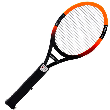Since ants thrive in most any ecosystem, and are indigenous in every part of the world except Antarctica, most everyone has seen an ant and can recognize them at first glance. They have a distinctive node-like body structure that forms a slender "wasp waist" and their antennae are elbowed, rather than straight. Flying ants are sometimes mistaken for wasps, since both are of the same family of insects.
Ants range in size from three-tenths of 1 inch up to 2 inches long, with carpenter ants near the upper end of that spectrum. Carpenter ants can be winged or wingless, red or black in color, and sometimes as large as 1 inch long. Carpenter ants only have one node and a thorax, while other common ants have two nodes.
Most commonly found in and around moist, wooded areas, carpenter ants are the most wood-destructive insects, making tunnels throughout solid wood including walls, floors, and household furniture. And because winged carpenter ants will fly, you might see them in your house in late winter or spring, and are sometimes confused with termites. Because both insects destroy wood and live in colonies, termites are often incorrectly identified as carpenter ants, and vice versa. It is important to distinguish between the two, however, since each are controlled by different methods. Here are the main differences between carpenter ants and termites:
Physical Characteristics of Carpenter Ants
Physical Characteristics of Termites
If you store lumber or firewood outside of your home, or in a garage, make sure that you keep the wood moisture-free and elevated from the ground or floor, since carpenter ants will colonize in moist wood. They feed on sugar and protein and have been known to travel as far as 100 yards to find food and feed on such edibles as sugar, jelly, meats, and dead insects. If you suspect a carpenter ant infestation, remove their food source and call a professional exterminator for an assessment.

Zap Flying Bugs! Simply press the button and swing. Once the fly, wasp, mosquito, or bug touches the screen it is instantly zapped! Simple to use and totally effective. No cords to tangle; uses only two AA batteries. Check out Executioner Flying Bug Swatter today!
A useful beauty product, petroleum jelly is also used as a barrier for ants. Smear it anywhere you see ants trailing to ...
Discover MoreIf you love to camp, but hate the ants, make your camping environment impossible for ants to thrive. Use vinegar to douse ...
Discover MoreSugar ants are identified by their black heads and orange and brown bodies. They are most active around dusk.
Discover MoreThere are currently no comments for this tip. (Be the first to leave your comment—just use the simple form above!)
Copyright © 2025 Sharon Parq Associates, Inc.
Comments